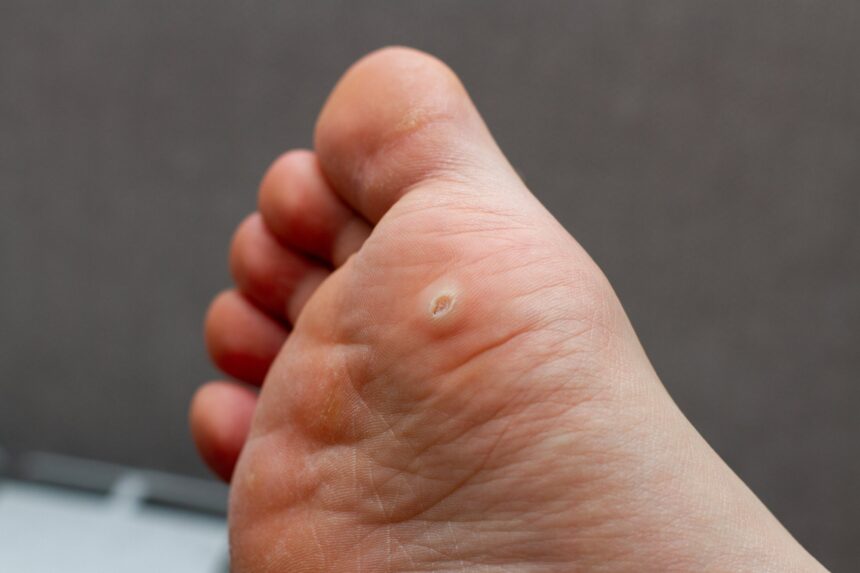Warts are small, rough growths that appear on the skin caused by a viral infection known as the human papillomavirus (HPV). They are widespread and can appear on any area of the body, but are most commonly found on the hands and feet. Warts vary in appearance based on the kind of HPV that causes them, but they typically have a rough texture and resemble a little cauliflower or a solid blister. Warts are often harmless, although they can be irritating or unsightly, particularly if they appear in visible regions.
There are several types of warts; Common Warts. commonly appear on the fingers, hands, knees, and elbows. Plantar Warts, Hard, flat warts that develop on the soles of the feet, often appearing with a slight depression in the center. They can be painful when walking or standing. Flat Warts. Smooth, slightly raised warts that often appear in clusters on the face, arms, or legs. They are typically smaller and less raised than common warts. Filiform Warts, Long, narrow growths that can develop on the face, neck, or other areas. They often have a finger-like appearance.
MUST READ; What is PCOS?
Warts are caused by the human papillomavirus (HPV), a group of over 100 different viruses. The virus infects the top layer of skin, known as the epidermis, through small cuts, abrasions, or breaks in the skin. Warts can spread from person to person through direct contact or contact with contaminated surfaces, towels, or objects. Children are more susceptible to warts due to their developing immune systems and frequent close contact with others. Symptoms of warts include; Small, rough, and cauliflower-like growths on the skin, can appear as a single wart or in clusters, may bleed easily if picked, scratched, or injured,can cause pain or discomfort, especially plantar warts on the feet and may develop a black dot in the center (known as a seed or bleeding point)
Warts can be treated through, watchful Waiting: Many warts, particularly in children, resolve independently within months or a few years as the immune system clears the virus. Salicylic acid: Applied topically to help remove the wart gradually over several weeks. Cryotherapy (freezing) with liquid nitrogen: Performed by a healthcare provider to freeze and destroy the wart. Chemical treatments: Application of trichloroacetic acid or other chemicals to remove the wart. Laser therapy or electrosurgery: Using laser or electrical current to destroy the wart. To prevent warts, avoid direct contact with warts of others, keep warts covered with bandages or clothing, don’t pick, scratch, or bite warts (can spread the virus), practice good hygiene and handwashing, avoid sharing personal items like towels or razors and Boost the immune system with a healthy diet and lifestyle.
In conclusion, though harmless, warts can be irritating to the eyes, painful, and persistent. If warts do not resolve within a reasonable time frame or cause significant discomfort, it’s recommended to seek medical advice for proper evaluation and treatment.


